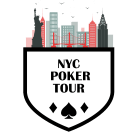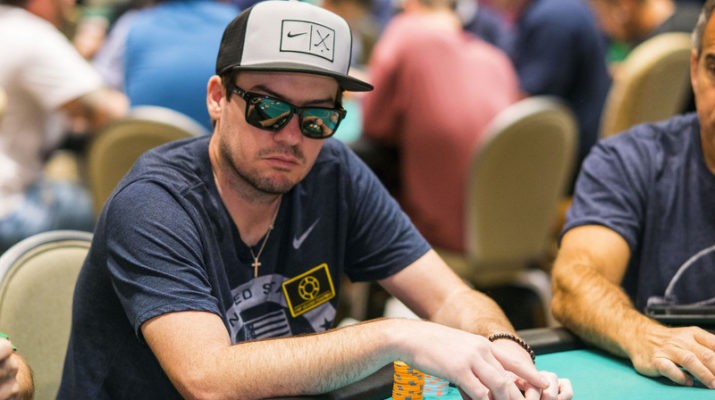Kentucky poker pro Kurt Jewell has enjoyed one of his best years ever on the felt in 2017. He’s been recording cashes in major poker tournaments for a decade now.
He had three dozen cashes this year alone, which put him within the top 60 in Card Player’s annual Player of the Year race. Thirteen of those cashes were final tables, including two wins. The big score eluded him in 2017, however. His winnings of $282,708 brought his lifetime tournament earnings to more than $1.2 million.
Jewell has 15 lifetime cashes at the World Series of Poker, but the WSOP Circuit is where he has truly excelled thus far. He has 35 Circuit cashes, including five wins. The five rings puts him just outside the top 10. He’s cashed for $629,680 in those events. The largest score of his career ($242,909) came in the WSOP Circuit Horseshoe Hammond $1,500 main event.
Jewell is determined to get his first bracelet. He recorded eight in-the-money finishes last summer at the WSOP, including a cash in the $10,000 buy-in no-limit hold’em championship. He made a WSOP final table in 2014, but ended up exiting in ninth.
Card Player had the chance to speak to him about his year on the felt and his plans for 2018, which includes a full slate of events to capture his first WSOP title.
Brian Pempus: On paper, it’s been a great calendar year for you. What’s been the key?
Kurt Jewell: It’s been a really good year. Before the World Series of Poker, I joined Chip Leader Coaching. My coach is Chance Kornuth. I had a lot of help from that during the WSOP. I would say that has been a big part of my success. It is nice being around good players and discussing what everyone thinks about a hand. It’s really helpful. Their motto basically is turning mid-stakes winners into high-stakes crushers. Turning a good player into a really good player, that’s what they’re going for. We’re adding a ton of people to our team. When it started, every week or so everyone in my group would have 1-2 hour lessons. We all got together on an app called AnyMeeting and went over someone’s hand histories or watched a final table video and talked about live tells.
BP: Are you looking to move up in stakes and play some of the high roller tournaments?
KJ: That’s the goal. Right now, our primary focus is to get a lot of volume in and get ready for the next WSOP. The schedule came out and everyone is really excited about it. My goal is to play a bunch of WSOP Circuit and WPT events and crush before the summer. This summer I will be playing a full bracelet schedule […] Studying poker is a huge thing too. You need to take a lot of time out to study, but one of the best ways to study is to actually play. You are learning every time you sit down. Every tournament I play I’m writing down a bunch of key hands that I play.
BP: You’ve had a lot of success on the WSOPCircuit and elsewhere, but how big is a bracelet for you?
KJ: It’s my biggest dream and what I’ve wanted more than anything since I began playing poker. I’ve had one final table so far and that’s the only time I’ve tasted the bracelet. I’m going to fight until I get one. Going into my first WSOP, I thought I was going to get a bracelet, no problem. But those tournaments are hard to navigate through. I guarantee that anyone who has won a bracelet has gotten lucky at least a couple of times during the run. You’ll have to have run-good on your side and play perfect. I think one day it will all fall into place. It will be my turn to get one. I haven’t ever had a full schedule of tournaments at the WSOP before, and this summer I will. I’ll have more opportunities.
BP: How have you been able to deal with the variance in tournament poker?
KJ: Every poker player in a downswing will question a lot of things. Somebody could be questing if they should even be playing. I’ve had buddies who were about to start a real job because they were running so bad, and then they go win a WPT and everything turns around. The variance in poker is crazy sometimes. At some points, I’ve questioned [my game], but I’ve always had the will to win and never give up. In my eyes, I know I’m going to succeed.
BP: You’re no. 1 on Kentucky’s all-time money list. Is that distinction meaningful for you?
KJ: It actually is. About two years ago, I was in third or fourth, and I saw that Billy [Kopp] was in first. He’s actually a buddy of mine. I was there for his run in the 2010 main event. It was really cool that he was the person I was chasing. He doesn’t play as much anymore. It was one of my goals to be no. 1 in Kentucky. It was only a couple of months ago when I won a tournament in Cincinnati that I passed Billy. I plan to always be no. 1 in Kentucky.
BP: Which events on the WSOP schedule are the softest in your opinion?
KJ: I think the softest ones are always the big field, gimmicky events. The Millionaire Maker, the Colossus, the Monster, all of those are going to be by far the softest. All the people who don’t play a full schedule, who only play a couple of events, are in those tournaments. With that said, most of the WSOP events are soft. All the bigger buy-in six-max events are your toughest. The main event is always soft because of a lot of people have the main event on their bucket list. Generally, the more people in the event the softer it is. I may play some of the PLO events, but other than that I won’t play any other game besides hold’em.
BP: What differentiates the skills of a mid-stakes player from a high-stakes player?
KJ: For example, with Chance, if you ask him a poker question he’ll basically know the answer to it. He knows the math and all the theoretical portions of the game, and he’s really good with live reads. He’s good in every aspect of the game. Somebody who studies is going to be ahead of the curve compared to someone who just goes and plays. The difference is the time you put into learning. The work ethic is what separates the high stakes from the mid-stakes. If you want to be the best, you have to put in the work.
Source : www.cardplayer.com






